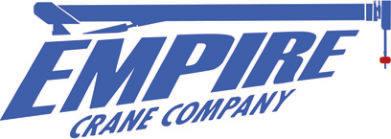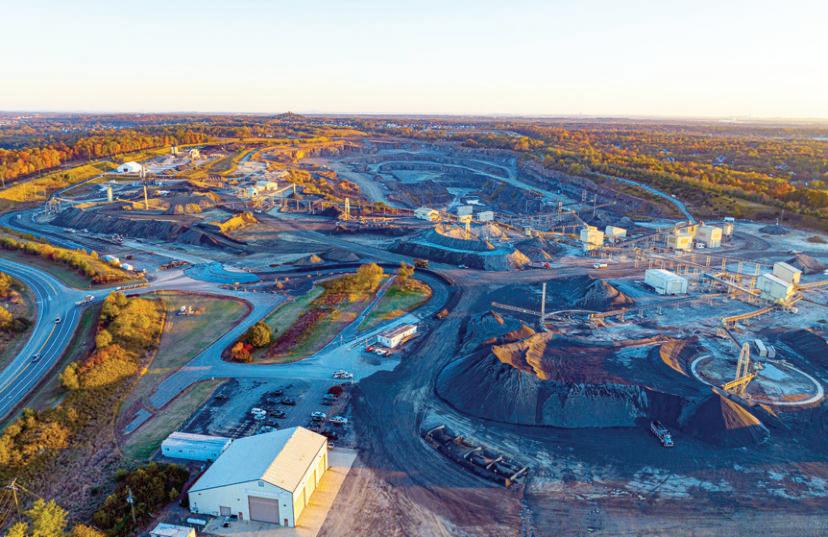
18 minute read
WESTCHESTER TRACTOR INTRODUCES GALLAGHER AS SALES CONSULTANT
Stertil-Koni Lands Major Competitive Bid to Provide Equipment to NJ TRANSIT
Heavy duty vehicle lift leader Stertil-Koni announced that it has been awarded a major, multi-million-dollar competitive bid to provide 462 of the company’s flagship EARTHLIFT Mobile Column Lifts to NJ TRANSIT.
It what the company is hailing as the single largest order in the 25-year history of Stertil-Koni USA Inc., the new vehicle lifts will replace a combination of existing 4 and 6 post lifts, surface-mounted lifts and mobile column lifts that NJ TRANSIT currently has in its service bays.
The selection of Stertil-Koni lifting systems to support the maintenance and repair of transit buses for NJ TRANSIT is significant. Covering a service area of 5,325 sq. mi., NJ TRANSIT is the nation’s third largest provider of bus, rail and light rail transit, linking major points in New Jersey, New York and Philadelphia.
The agency operates an active fleet of 2,221 buses, 1,231 trains and 93 light rail vehicles. On 253 bus routes and 12 rail lines statewide, NJ TRANSIT provides nearly 270 million passenger trips each year.
Noted Stertil-Koni president, Jean DellAmore, “Given the scale of NJ TRANSIT’s user base, the maintenance demands are substantial. And, that is why we are so honored that Stertil-Koni’s lifting systems were selected in a competitive bid environment for such a critical mission.”
The Stertil-Koni Wireless ST 1085 mobile column lifts are powered by dependable, efficient, hydraulic technology and have multiple distinguishing features that make them an ideal choice for transit agencies — large and small — across North America. These include: a lifting capacity of 18,500 lbs. per column, a lifting height of 73 in., a full-color touch-screen control panel, overload protection and synchronization as standard, and a super safe mechanical locking system -- also as standard. “What’s more,” DellAmore added,
“these vehicle lifts are Buy America compliant, feature rapid lifting and lowering every time, and are made with maximum strength high tensile steel.” Helping to make it all happen, was
Hoffman Services Inc. (HIS), Stertil-
Koni’s exclusive distributor, headquartered in Newark, N.J. — and dedicated to serving the entire Garden
State with the very best in heavy duty vehicle lifting systems. The company was established in 1926 and specializes in all aspects of vehicle lifts — from selection and installation to parts, world-class service and top-flight accessories.
“The entire team at Hoffman
Services Inc., and in particular Larry
Morgan and his sons Matthew and Ben
Morgan, have done an outstanding job building an unparalleled reputation for vehicle lift sales, performance and service in the State of New Jersey,”
DellAmore said.
“They are an exceptional partner and we salute their terrific work. This is a win for NJ TRANSIT, its customer base, as well as for Hoffman Services Inc. and Stertil-Koni.”
Stertil-Koni has been awarded a major, multimillion-dollar competitive bid to provide 462 of the company’s flagship EARTHLIFT Mobile Column Lifts to NJ TRANSIT.
The Stertil-Koni Wireless ST 1085 mobile column lifts are powered by dependable, efficient, hydraulic technology and have multiple distinguishing features that make them an ideal choice for transit agencies. 72 Everett Road Albany, NY 12205 518-438-4444 abeletractor.com


460 Main Street Spencer, MA 01562 508-885-7085 10 West Road Hudson, NH 03051 603-324-1164 ahearnequipment.com

1750 Hackers Creek Road Jane Lew, WV 26378 304-786-9587 aesolutionswv.com
70 Upper Main Street Essex Junction, VT 05452 802-872-2666 ccrsalesvt.com
TRUCKS from page 1 far the biggest polluters, according to cleantechnica.com. Accounting for 10 percent of trucks on the road, they are responsible for about half of all truck emissions.
The new IRA will create additional federal funding opportunities for trucks and charging stations. That includes a $40,000 tax credit for electric cargo trucks and a 30percent credit for chargers. Federal Relief
The landmark law could double or triple the market for battery-electric trucks to as high as 38 percent of the fleet by 2030, claims cleantechnica.
Another $7.5 billion for chargers was included in last year’s Infrastructure Investment and Jobs Act.
“The IRA’s incentives for heavy-duty electric trucks could not come at a better time,” according to research organization RMI. “The United States has more than four million heavy-duty trucks that travel over 150 billion miles and create over 260 million tons of greenhouse gas emissions [GHG] per year.”
The primary purpose of these incentives is to encourage buying and using zero- and low-emission vehicles, said the North American Council for Freight Efficiency (NACFE).
Trucking companies considering capital investments in electric vehicle technology have to wonder if subsidies will disappear before their fleet build-out is complete.
NACFE believes that with growth in subsidies combined with the slow adoption rate of commercial electric vehicles subsidies may be around for the foreseeable future
With the IRA in place, the industry can decarbonize, potentially reducing its GHG emissions by 59 percent in 2035, nearly double what would happen without the IRA, said RMI.
With the IRA tax credit, owning an electric truck is actually cheaper than owning a diesel one in most use cases, finds the research firm. In fact, urban and regional electric trucks will become cost-superior to diesel ones as soon as 2023.
Trucks can travel 100,000 miles per year, and electrification creates significant fuel savings.
“Even many long-haul trucks that are the hardest to electrify could be transformed,” said RMI.
Zero-emissions trucks are already markettested and viable for many uses. NACFE has proven that trucks with routes less than 200 miles a day can be electrified now.
Adoption hinges on vehicle economics improving and available depot and on-route charging extending the truck’s range. Boom Prediction
RMI analyzed the economics behind the electric vehicle adoption and how that affects fleet-wide transition.
“Once zero-emissions trucks become cheaper than their diesel counterparts, adoption follows based predominately on vehicle and infrastructure availability.”
The IRA will drive down the total cost of electric truck ownership approximately five years sooner than without the law. This stands for trucks traveling locally from 50 to 100 miles a day, regionally 100 to 250 miles per day round trip and long-haul trucks that travel 250 or more miles between cities, recharging enroute. A fleet’s purchase decision can be based on environmental commitments, fueling access, financial resources and operating requirements. “But for most fleets, cost is the driving concern,” said RMI. “Once electric trucks make the most economic sense for fleets, they increasingly adopt them.” The IRA jumpstarts a virtuous cycle by bringing about cost parity a lot sooner. Truck owners can start adding charging to their depots and look for e-trucks that meet their operational needs.
In turn, manufacturers of both vehicles and chargers can bring new and better products to market. This, then, will further improve electric truck costs and operational viability, driving even more adoption, believes RMI.
The firm projects the IRA will result in even greater electric truck sales.
“By 2030, more than 60 percent of new truck sales could be electric, depending on supply chain issues,” predicts the company.
Trucks can travel 100,000 miles per year, and electrification creates significant fuel savings.
At State Level To facilitate the conversion for trucking “By 2030, more than 60 companies, California has instituted a Hybrid and Zero-Emission Truck and Bus percent of new truck sales Vouncher Incentive Projects. The program has given out $700 million in rebates for could be electric, depending approximately 6,000 zero-emission trucks. Regionally, organizations such as East on supply chain issues.” Bay Community Energy are offering technical assistance to fleets, as well as loans of up to $3 million to support truck electrification. RMI “Our organization previously helped fund a program to expand EV charging in Alameda County with the state Energy Commission,” said cleantechnica. Further, utilizing the power market for charging, truck operators can generate maximum credits under California’s Low Carbon Fuel Standard and earn extra incentives to cut emissions. The state of Michigan has established a grant program through the Department of Environment, Great Lakes and Energy (EGLE). “This is an exciting milestone into a future of innovation, cleaner air and reduced GHGs,” said Debra Swartz, fuel transformation specialist in EGLE’s materials management division. The program allocates $30 million over see TRUCKS page 100




s ortuibrt
7021 Performance Drive N. Syracuse, NY 13212 800-342-7575
12 Mear Road Holbrook, MA 02343 508-868-7734 9 Finderne Avenue, Ste 7 Bridgewater, NJ 08807 908-203-0400








www.empirecrane.com
ww onadat.w mco.scairmea a Cciremo AnadaT sneer2 W G42, 4noitop rro a ,dR ,notsuoH T 07X 7 6 P6 )182: +neoh 1 ( 968 -0 030
VDOT Announces First Segment of I-64 Widening Advances
Virginia Secretary of Transportation Shep Miller announced that the Commonwealth is advancing a longawaited project to begin widening the 64 Gap — the 29-mi. section of Interstate 64 between Richmond and Williamsburg where the highway narrows from three to two lanes in each direction.
“This notoriously congested stretch of interstate disrupts one of Virginia’s vital thoroughfares,” said Miller. “Adding a third lane in each direction will unlock the corridor, unify Richmond and Hampton Roads, grow the economy and provide opportunities for all.”
The Virginia Department of Transportation (VDOT) issued a Request for Qualifications (RFQ) for the first of three segments of the 64 Gap project on Dec. 16. This first segment stretches from mile marker 205 in Bottoms Bridge to mile marker 215.6, slightly more than a mile east of Courthouse Road (Exit 214) in New Kent County.
“The importance of connecting the Richmond and Hampton Roads regions cannot be overstated,” Miller added. “Issuing this RFQ is the first step in closing the gap and realizing the RVA/757 region’s true potential while improving safety on the corridor.”
“With unprecedented support from the General Assembly, Central Virginia Transportation Authority, Hampton Roads Transportation Accountability Commission and VDOT, the Commonwealth has demonstrated a commitment to providing infrastructure that delivers opportunities for all, improves travel time reliability, reduces congestion, and improves safety,” said VDOT Commissioner Stephen
Brich.
Adding a third lane in each direction of the 64 Gap provides a more efficient and safer connection between Richmond and Hampton Roads. Since the conclusion of the I-64 widening projects at
Bottoms Bridge in New Kent and
Segment 3 in Hampton Roads, VDOT has been preparing for the remaining 29mi. section for expansion.
Brich added, “I-64 is an important evacuation route for the Hampton Roads and northeast North Carolina areas in the event of an emergency. Widening the 64
Gap will improve traffic flow when we need it most.”
The forthcoming 10-ft.-wide paved shoulders on both sides of the road will help move traffic around minor accidents, provide unobstructed travel for emergency vehicles, and offer stranded motorists peace of mind in the event they experience a breakdown.
VDOT will release a Request for Proposals for this initial section in spring 2023 and expects to award a Design-Build contract in the fall of 2023. The estimated
completion of this section is winter 2026-27. “This notoriously VDOT recently secured final National Environmental Policy Act (NEPA) approval congested stretch of for the entire widening project, clearing the way for final design and construction. The interstate disrupts one 29-mi.-long project, from mile marker 205 at Bottoms Bridge just east of I-295 to the of Virginia’s vital Lightfoot exit (mile marker 234) in the Williamsburg area, adds a 12-ft. travel lane thoroughfares. Adding a in both directions and 10-ft. paved shoulders on both the inside and outside lanes. The third lane in each median is being used for the additional lanes direction will unlock and shoulders. The Commonwealth is seeking federal the corridor…” grant funding through the U.S. Department of Transportation’s Multimodal Project Discretionary Grant Opportunity to support funding for the full project. VDOT estimates Shep Miller the entire 29-mi. project will cost approxi-Virginia Department of Transportation mately $750 million. In addition to the roadway widening, the project will widen and rehabilitate multiple bridges, and install new overhead signs, cameras to help with incident alerts, sound barrier walls, culvert and pipe repairs, and storm drainage and stormwater management systems. For more information, visit www.virginiadot.org/projects/richmond/i-64-gap-segment-a-widening.asp.
A view of the proposed reconstructed interchange and ramps, looking east.
The Massachusetts Department of Transportation (MassDOT) recently held a virtual meeting detailing the beginning of the construction phase of the remodeled interchange between Interstate 495 and Interstate 90, which straddles the towns of Hopkinton and Westborough southwest of Boston.
As part of the project, one of Hopkinton’s two Fruit Street bridges is undergoing reconstruction (the other currently is being redesigned). The result is that the area is closed to traffic and will remain so for a few more months, MassDOT told the Hopkinton Independent.
“The Fruit Street bridge will be replaced in two major stages,” explained Donald Cooke, the project’s design manager of Watertown-based engineering firm VHB.
He added the Hopkinton bridge construction will be performed with one alternating lane of traffic open during the building period. Roadway, utility work and landscaping are all included.
Nearby, the upper part of the structure of the Flanders Bridge in Westborough will be replaced as well, Cooke noted.
During the question-and-answer period, Barry Lorion, MassDOT’s District 3 highway director of central Massachusetts, clarified that there are two projects that involve Fruit Street. Separate from the first project is the ongoing reconstruction of the second Fruit Street bridge.
One commuter to Hopkinton, George Allegrezza, noted the current steep incline at the merge point to get onto I-495 south. He told MassDOT there is a “very tight radius” to get into this incline and a narrow merge lane which is difficult for delivery trucks to navigate. “Traffic following the trucks tends to pop out, move left one or two lanes, and accelerate quite rapidly up the hill,” he explained, while expressing his hope that the new configuration would address the issue. In answering Allegrezza’s concern, Cooke explained that all the radii for the ramps were tight because people had to stop to pay their tolls manually. “I could tell you with some confidence that every one of the ramps will have better radii more suited to the speed that people would like to drive — not high speed,” he said. Because of the sheer traffic volume, Fruit Street project will not include accelerated bridge replacement strategies because the bridges need to remain open. In urban projects, Cooke noted that a bridge structure could be closed for a weekend for more rapid construction, but that is not feasible in this case.

Congestion, Poor Geometry Led to Interchange Rebuild
Interestingly, the I-495/I-90 Interchange Improvement project is the first complete interstate-to-interstate interchange effort that the transportation agency has undertaken in its history.
“This is one of the largest projects that MassDOT has ever advertised for construction since its inception in 2009,” Lorion said.
The project’s radius is three-quarters of a mile from the interchange point, he noted.
More than 200,000 vehicles pass by or through the interchange on an average day, according to MassDOT, which includes 50 percent of the state’s commercial traffic. The need for a reconfiguration of the interchange arose after the removal of toll booths and the installation of the E-Z Pass electronic tolling system.
The goal of the nearly $300 million project is to alleviate what Lorion called “chronic congestion” and correct “substandard geometry” that currently contributes to crashes and rollovers on both roadways, the Hopkinton news source reported Nov. 30.
To improve those issues, the roadways’ on-ramps and off-ramps will be lengthened to provide smoother access for vehicles, and traffic no longer will have to weave through the old toll areas once the project is complete.
MassDOT terms the I-495/I-90 interchange upgrade as a design-build project because construction and design elements will happen simultaneously over the course of the next five years. Public meetings will be scheduled to explain the process throughout the build, the state agency’s team members said in November.
“We will completely replace the interchange, and it will be unrecognizable from what you see today,” Lorion noted. Work to Begin Before New Year
Cooke said construction will begin before the end of the year on I-90’s on-ramps and off-ramps. Fiber optic cables will move from the median of I-90 to outside its westbound shoulder, as well as from I-495’s median from the Massachusetts Pike/I-90 to outside of I-495 southbound.
The current three-lane configuration for each direction of the two interstates will remain, he added. A temporary lane will be installed to help traffic flow during the construction period, the Hopkinton news source learned. Additionally, the number of lanes will not be increased by the project because of the proximity of sensitive environmental resource areas, including Whitehall Brook, and other wetlands and floodplains.
The bridges over Whitehall Brook in Hopkinton and the MBTA commuter rail station in Southborough are slated to be completely replaced, Cooke continued, adding there will be “minor horizontal and vertical changes” for the new single-lane ramps. Where the on-ramps and off-ramps converge, they will form double lanes.
New construction will take place on I-495 northbound within the existing median, Cooke made public, while the southbound side will stay as it is. This allows space for the staging of traffic throughout the construction period, he said. Crews will build an auxiliary lane northbound from the interchange to Massachusetts Route 9, and there will be a new direct lane from I-495 northbound to I-90 eastbound.
The freeway interchange upgrade also will include a new loop ramp from I-495 southbound to I-90 eastbound, part of a two-lane offramp that will enter I-90 as a single-lane onramp.
Image courtesy of MassDOT

Pages 57-76 Aggregate Production and Recycling Section
For more information on crushing, screening and recycling equipment, visit CEG's Web site at www.constructionequipmentguide.com. Cat, Luck Stone Collaborate to Scale Autonomous Solutions
With 29 operating locations and more than 900 associates, Luck Companies is headquartered in Richmond, Va., where it was founded by Charles Luck Jr. in 1923.


Caterpillar Inc. announced a collaboration with Luck Stone, a large family-owned and operated producer of crushed stone, sand and gravel, to deploy Caterpillar’s autonomous solution to Luck Stone’s Bull Run Plant in Chantilly, Va.
This will be Caterpillar’s first autonomous deployment in the aggregates industry and will expand the company’s autonomous truck fleet to include the 100-ton-class Cat 777.
Looking to accelerate autonomous solutions beyond mining, Caterpillar will implement its existing Cat MineStar Command for Hauling system at the Bull Run quarry, on a fleet of 777G trucks. This will allow Caterpillar to gain greater insights on quarry operations in order to tailor the next generation of autonomous solutions specific to quarry and aggregate applications.
This project supports the acceleration of autonomous technology for operations with fewer mobile assets to allow a step change in safety and productivity, as currently experienced at large mining operations.
“Luck Stone and Caterpillar’s partnership has been grounded in shared values for many years,” said Charlie Luck, president and CEO of Luck Companies. “Together we believe that safety, innovation and a commitment to people are critical, not only to propelling important projects like this, but to ensuring our focus on the future and all of the exciting possibilities technology affords our industry.
“Our collaboration will provide opportunities for associates to learn and grow, improve safety and result in production efficiencies. We are thrilled to partner with Caterpillar to achieve this ‘first’ for our industry.”
“Caterpillar has a long-standing relationship with Luck Stone, and we look forward to working together to bring the demonstrated benefits of increased safety and productivity to the quarry industry. We’re excited to get in the dirt and work alongside Luck Stone’s innovative team, so we can learn how to scale our already proven mining solution for another industry,” said Denise Johnson, Caterpillar group president of resource industries.
The current autonomy solutions will be implemented in 2024. This project builds on Caterpillar’s long history in autonomy and automation. Caterpillar is recognized as the industry leader with the world’s largest fleet of autonomous haul trucks, now numbering more than 560 trucks. These trucks have traveled more than 187 million kilometers and autonomously moved more than 5.1 billion tonnes — most notably — all without a single zero lost-time injury. About Luck Stone
Through three generations of family leadership, Luck Stone has been building strong communities for 100 years. Luck Stone, a division of Luck Companies, is the nation’s largest family-owned and operated producer of crushed stone, sand and gravel. A responsive and creative partner to the construction, civil engineering and environmental industries, Luck Stone provides consistent, quality aggregate materials and services that serve as the foundation of roads, bridges and buildings.
With 29 operating locations and more than 900 associates, Luck Companies is headquartered in Richmond, Va., where it was founded by Charles Luck Jr. in 1923. Charlie Luck IV leads the company today.
For more information, visit www.caterpillar.com.



Craig Wiant (L), plant manager, and Johnny Palmer, both of Luck Stone. Looking to accelerate autonomous solutions beyond mining, Caterpillar will implement its existing Cat MineStar Command for Hauling system at the Bull Run quarry, on a fleet of 777G trucks.










